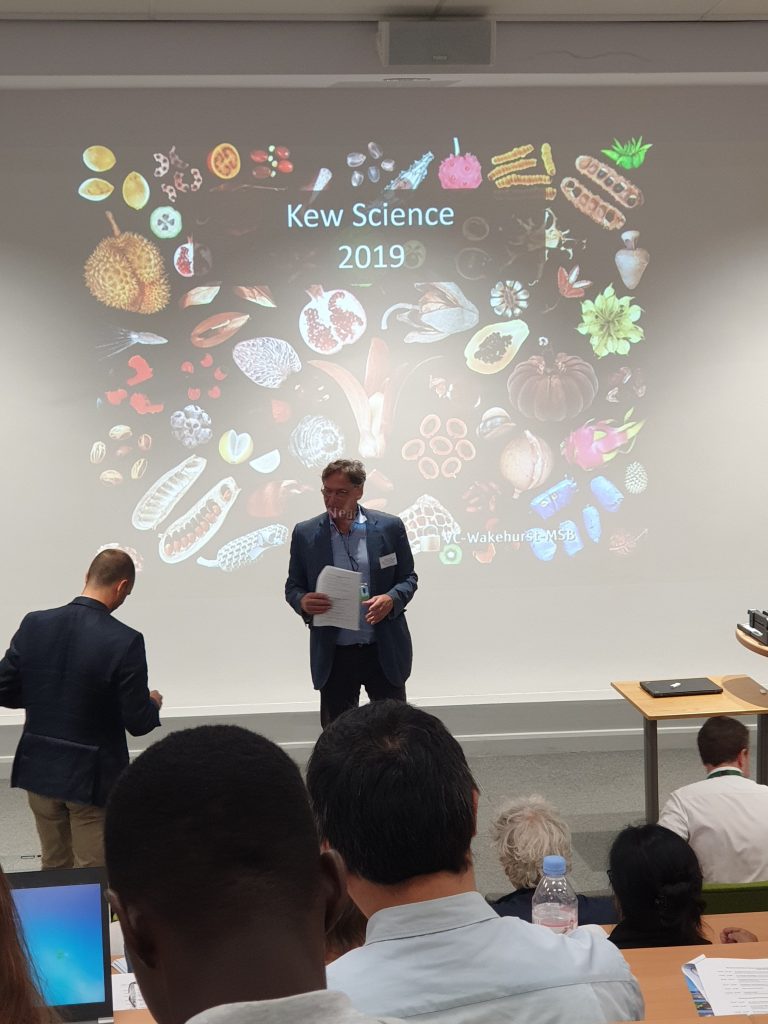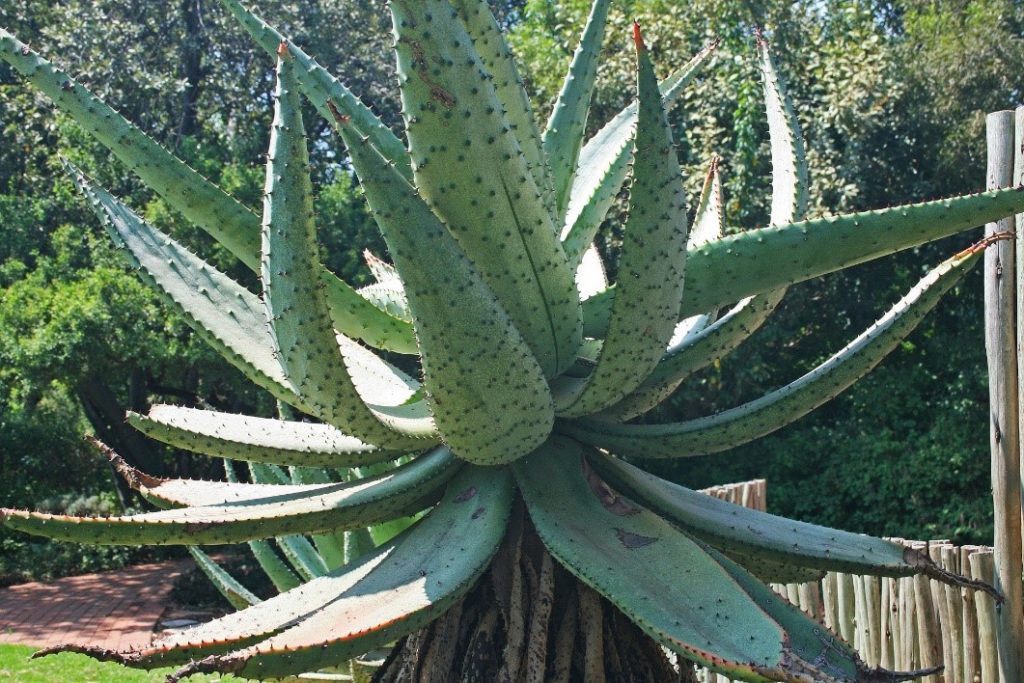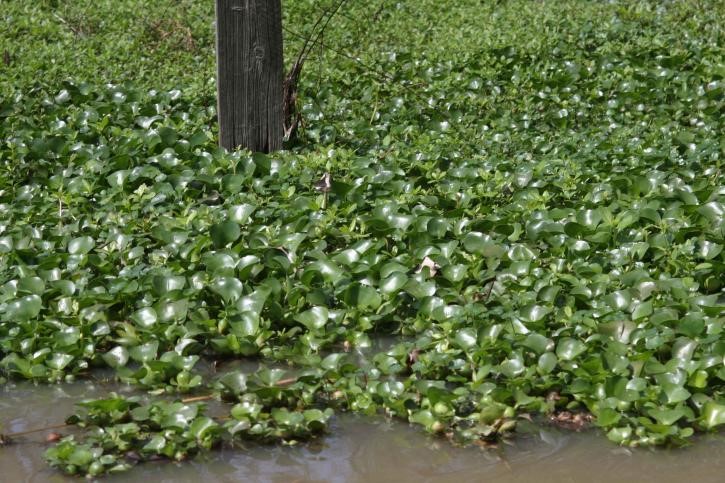- Date
- 11th August 2019
- Categories
- General
By Dr Joni Cook
What is the scale of the potential for ubiquitous native desert succulents and invasive alien plant species to be used as cost-effective, sustainable bioenergy resources? How can the application of an ‘ideas to action’ approach stimulate progress in the design and installation of small-scale wind-solar hybrid systems? What are the key challenges of realising decentralised bioenergy production potential in order to strengthen community energy resilience in rural India, and how can these be resolved? These were just a fraction of the diverse range of research topics showcased at the ‘Plant Power: bioenergy as a renewable resource’ conference, held on 27th June 2019.
At this event, organised by the University of Leeds, and held at the Royal Botanic Gardens, Kew, London, academics and researchers gathered to share progress, insights and current challenges from ongoing research exploring the use of bioenergy as a renewable source of energy. Participants represented a broad range of academic institutions, research centres and think tanks from around the globe, including the Centre for Research in Energy and Energy Conservation and Makerere University (Uganda), the Resilience Development Initiative (Indonesia), the Dar-es-Salaam Institute of Technology (Tanzania), the Indian Institute of Technology and Visva Bharati University (India).

Participating in this conference on behalf of the Modern Energy Cooking Services (MECS) programme provided the opportunity to gain valuable insight into the cutting edge of a wide diversity of bioenergy related research being conducted worldwide, and to forge new potential future MECS programme collaborations with other researchers during the networking sessions. Whilst the direct use of bioenergy as a fuel source for cooking is firmly out of scope for the MECS programme, there is substantial potential to foster future collaborations with organisations exploring the production/application of plant-derived biogas as a clean cooking fuel option.
A diverse range of innovative research programmes relating to the production of bioenergy-derived biogas were showcased at the conference. At the Institute of Chemical Technology, Mumbai, Dr Vishwanath Dalvi and colleagues are exploring the potential use of crop residues for electricity production in rural India. Currently, crop residue is frequently used for fodder and rural cooking, hot water and heating. Cooking is primarily carried out using wood/dung chulhas (traditional U-shaped mud stove), with a relatively low thermal efficiency of 10%. The team is investigating the potential for biomethanation of crop residues for electricity production, which could then be used for clean cooking. Current challenges include the costs associated with collecting biomass prior to processing, and the need for new “biomass mini-grid” technologies to be developed which enable rural farmers to grow and process biomass on site. Overcoming these challenges would enable farmers to benefit not only from generating electricity from an agricultural waste by-product, but to benefit from increased energy resilience (compared with mains grid systems) due to the decentralised nature of on-site mini-grids.
Desert succulents also have considerable potential for generating biogas. Dr Olwen Grace, Senior Research Leader in the Comparative Fungal and Plant Biology Department at Kew is exploring the potential of aloes to be used to generate biogas in Africa. These native plants are typically situated in semi-arid regions that are characterised by high biodiversity. These regions are also particularly vulnerable to the impacts of climate breakdown such as prolonged drought. Therefore, harnessing biogas from succulent biomass potentially offers an innovative renewable energy solution based on natural resource management that will contribute towards strengthening community energy resilience under future projected climate scenarios for these regions.

Use of the biomass of highly invasive alien plant species to generate renewable energy also offers tremendous potential. This is particularly relevant for countries with developing economies which are more vulnerable to the risk of invasion by alien species, and have reduced abilities to withstand the impact of associated damage – in South Africa alone, invasive species cost the country approximately $450 million per year. In India, Uganda and Kenya in particular, the aquatic alien species of water hyacinth (Eichhornia crassipes) is highly detrimental to the environment and human health.

The plant forms continuous mats on lake surfaces which cause deoxygenation of water supplies, decreases in lake biodiversity and negative impacts on human health through the harbouring of mosquitoes. Dr Andrew Ross of the University of Leeds gave an overview of the BBSRC-funded BEFWAM project (Bioenergy, clean water from invasive aquatic macrophytes) which is exploring the potential for converting invasive aquatic plant biomass to bioenergy in India and Uganda. One question that the team is exploring is whether biogas derived from the anaerobic digestion of hyacinth biomass can replace fuelwood currently used for cooking. These innovative uses of highly destructive invasive alien plant species offer real potential for generating renewable energy for clean cooking and other applications in ways which are not only environmentally and socially sustainable but reap multiple net benefits for society, environment and human health.
With the window of opportunity for lessening the effects of climate and environmental breakdown ever decreasing, it is imperative not only that 100% renewable energy solutions are implemented at a global scale to replace fossil fuels as quickly as possible (net zero carbon emissions at a global scale required by 2050 in order to achieve a 66% probability of limiting global warming to 1.5 degrees C above pre-industrial levels, and strong evidence that this target at the country level needs to be achieved much earlier than 2050 in relatively prosperous countries, for example by 2025 in the UK), but that these renewable energy solutions themselves are produced along environmentally and socially sustainable supply chains. Indeed, an IPCC special report on Climate Change and Land released last week raised grave concerns about the severity of future conflicts between widescale conversion of vast areas of land for virgin bioenergy crop plantations and food security, biodiversity and the land rights of farmers in the Global South. One of the main highlights of the Plant Power conference was finding out more about the diverse range of environmentally and socially sustainable methods of generating plant-derived biogas that were showcased. These methods have real potential to contribute towards a blend of 100% renewable and sustainable energy solutions for clean cooking (and other energy use applications) that can be tailored to country- and/or region-specific contexts.